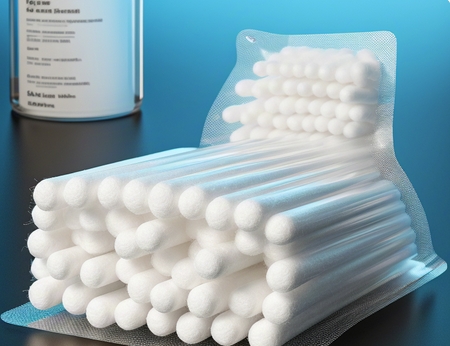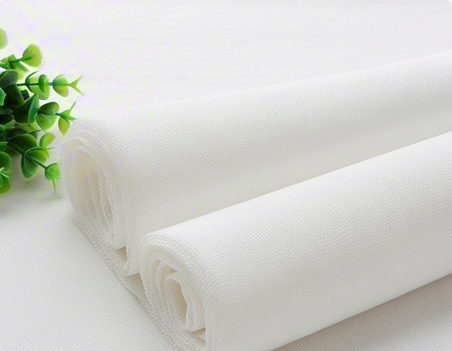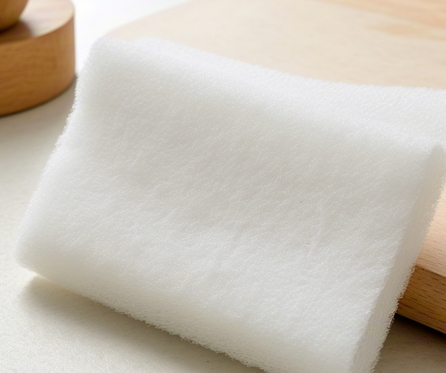Language

Guide to operating specifications for professional clean environment surface cleaning
In controlled environments such as pharmaceutical laboratories, biosafety rooms and medical operating rooms, systemic surface cleaning is the core line of defense to control microbial contamination. According to the ISO 14644 clean room standard requirements, a standardized six-stage cleaning process can reduce the risk of cross-contamination by 98.7%. Operators should master the following key processes, pay special attention to the correct use of industrial dust-free cloth and the control of wiping trajectory.
Phase 1: Pre-cleaning preparation operators need to use industrial dust-free cloth or pre-wet wipes for surface pretreatment. Focus on removing visible particles and loose debris, this step can reduce subsequent cleaner consumption by 40%. It is recommended to use one-way wipe technology to avoid repeated use of the same wipe surface in clean areas of 100,000.
Phase 2:The second stage: Main cleaning is performed to select pH-neutral nonionic surfactant and deionized water (DI water) for deep cleaning. For stubborn stains, the "soil-soften-clear" three-step method can be used: first use a microfiber wipe to soak the surface, keep the contact time for 60–90 seconds to soften the dirt, and finally use a professional-grade clean room mop system for mechanical removal.
.
Phase 3: Precision rinsing This stage requires the use of water for injection (WEI) to eliminate detergent residue. It is recommended to use the "three-zone flushing method": the central area is spiral wiped, the transition area is wiping in parallel, and the edge area is unidirectional finishing. It is worth noting that in electronic component cleaning scenarios, 70% isopropanol (IPA) pre-saturated dust-free cloth can be used for volatile rinsing.
Phase 4: Disinfection and sterilization. Select verified disinfectants based on the surface material. For example, hydrogen peroxide atomization treatment is recommended for stainless steel surfaces, and polymer materials are wiped with quaternary ammonium compounds. Key control points include: the contact time of the disinfectant must reach the D value specified by the manufacturer (logarithm of microbial killing), and the wipe coverage rate should ensure 100% surface contact.
Stage 5: Residual removal (extended content not mentioned in the original text) Use a laser particle counter to verify the surface cleanliness, and the number of particles with a particle size of ≥0.5μm is required to not exceed 3520/m³ (ISO level 5 standard). For precision optical components, it is recommended to add ultrapure water final drainage steps and eliminate water stains in combination with a positive pressure drying system.
Stage 6: Process verification (extended content not mentioned in the original text) implements ATP biofluorescence detection, and the relative light unit (FLU) should be controlled within the qualified threshold. Establish a cleaning process quality file and record key parameters including: wipe pressure (recommended 15-20N), movement speed (30cm/s), and ambient temperature and humidity fluctuation range.
Professional tips: In biopharmaceutical clean rooms, it is recommended to use "surgical wipe" - treat the work surface as the surgical area, and each cleaning action must follow the preset path. For cleaning of high-value equipment, special anti-static dust-free cloth can be used with a vacuum adsorption system to achieve synchronous removal and collection of debris.
Detailed explanation of the six-step standard process for industrial clean environment disinfection and sterilization
In clean room environment maintenance, the microbial disinfection process must strictly follow scientific norms. This process achieves microbial inactivation through thermal sterilization or chemical disinfectant action. Key parameters include the action time (usually 15-30 minutes), temperature range (121℃±2℃ recommended for humid and heat sterilization) and disinfectant concentration. Special attention should be paid to the characteristics of the target microbial properties. For example, Bacillus needs to extend the contact time to more than 45 minutes, while norovirus needs to use chlorine-containing disinfectants.
Important tip: Disinfectant selection should be adjusted according to the level differences in clean room. It is recommended to use hydrogen peroxide atomization system for ISO level 5 areas, and quaternary ammonium salt composite preparations can be used in ISO level 7 areas. All operations must comply with Article 8.23 of Appendix 1 (2022 Edition) of GMP on disinfection of clean areas.
Key Step : Residual removal Use deionized water (resistivity ≥18.2MΩ·cm) or water for injection (WEI) for terminal rinsing, and wipe the surface with a pre-wetted isopropanol (IPA) dust-free cloth. Practice in the pharmaceutical industry shows that 0.1% per acetic acid needs to be rinsed with 3 times the volume of purified water after treatment. It is recommended to use two-stage flushing for special material surfaces (such as polytetrafluoroethylene): pH neutralization of the first stage, conductivity control of the second stage is<1.3μS/cm.
Ultimate treatment: Drying and controlling natural air drying is the preferred solution, and the laminar flow wind speed should be maintained at 0.45±0.1m/s. When it is necessary to wipe, you must use Class A nonwoven fabric (compliant with ISO 9073-6 standards) and use it in a single time. Experimental data show that the number of reused rag colonies can reach 1200 times the initial value (FDA 2021 Clean Room Microbial Control Guide). After drying, the surface microbial residue should be<1CFU/25cm² (ISO 14644-1 Class 5 standard).
Special reminder: Ethanol disinfectants may form biofilms after evaporation, and it is recommended to use nonionic surfactants in conjunction with them.
Tags:
RELATED RESOURCES

Should I choose 70% or 99% cleanroom cotton swabs?
Professional grade isopropyl alcohol cleaning tool operation guideIn the field of precision instrument mainten......
More

Analysis of technical parameters of woven cleanroom cloth: Precision manufacturing advantages behind
In ultra-clean environmental operations such as microelectronics manufacturing, biomedicine and precision opti......
More

9.9Inch dust-free wipe size specification: How ISO standards reduce consumable costs by 30%
Clean room cleaning revolution: Decrypting the scientific design of 9x9-inch dust-free wipesHistorical evoluti......
More

Industrial Steam Cleaners: Powerful Sanitization for Commercial Applications
Industrial steam cleaners represent the pinnacle of cleaning technology in commercial and industrial settings.......
More
Related Products
Room 101, Building 1, Angeer Factory, No.4, Hetian Road, Shatian Community, Kengzi street, Pingshan District, Shenzhen, Guangdong, P.R. China 518122
info@wipestar.com
+86-755-89616775
+86-755-89616773
Related Products
RELATED RESOURCES

Should I choose 70% or 99% cleanroom cotton swabs?
Professional grade isopropyl alcohol cleaning tool operation guideIn the field of precision instrument mainten.........
More

Analysis of technical parameters of woven cleanroom cloth: Precision manufacturing advantages behind
In ultra-clean environmental operations such as microelectronics manufacturing, biomedicine and precision opti.........
More
WIPESTAR
微信官方公众号